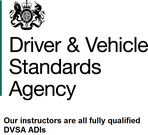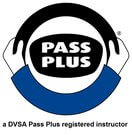
Winter may be a few months away yet, but there’s never a bad time to start thinking about cold weather road safety. Driving in the winter months inherently brings additional risks and complications, calling for increased care and attention at all times.
With this in mind, here’s a brief rundown of 9 tips from the pros on how to stay safe on the roads this winter:
1. Using appropriate tyres to drive in Winter Conditions
Below 7 degrees Celsius standard summer tyres lose road traction due to the rubber compound becoming harder because of the colder temperature outside. This in turn means less road grip and will lead to an increased stopping distance. Winter tyres are designed to grip the road in colder temperatures and they also come with a more aggressive tread pattern so that if there is any black ice or snow you have a greater degree of steering and braking control. Winter tyres can be used all year round but in warmer weather they can wear out quicker than a standard summer tyre. Winter tyres are more efficient at dispersing water i.e. if you drive into a pool of water at speed you have more control to avoid aquaplaning. Two recommended winter tyre brands are Yokohama BluEarth Winter and Goodyear Ultra Grip.
2. Take Your Time
First and foremost, the key to staying safe in difficult driving conditions is to take your time. Whether this means setting off early or arriving late, it’s a small price to pay to safeguard yourself and everyone else on the roads from harm. Hurried driving is a recipe for disaster at all times – not just when the weather is at its worst.
3. Increased Stopping Distances
The time and distance needed to stop when the roads are wet, icy or snowy is significantly greater than in amicable driving conditions. In fact, it could take you up to 10 times longer to bring your vehicle to a standstill. Increased stopping distances are therefore essential to remember, ensuring you keep a safe distance from the vehicle in front.
4. Keep a Clear View
This basically means resisting the temptation to start your journey before adequately clearing your windows. Ice, fog, snow, condensation etc. – anything with the potential to affect visibility is something that could increase your likelihood of being involved in an accident.
5. Avoid Peak Driving Times
Unfortunately, you cannot count on all other motorists to follow the rules of safe driving in winter. In which case, it’s common sense to safeguard yourself from as many potential third-party threats as possible, which means avoiding journeys when the roads are at their busiest. Doing so could also save you a world of stress and anxiety, as an added bonus.
6. Check Your Car’s Condition
By this, we mean keeping a close eye on things like tyre pressures, tread depths, engine coolant levels, windscreen washer fluid and so on. Not to mention, ensuring your lights, windscreen wipers, heaters, blowers and so on are all in good working order. What may appear to be a seemingly minor issue could actually be all that’s needed to put you in harm’s way.
7. Watch the Weather Forecast
It’s remarkable how many motorists get caught off guard by extreme weather conditions, despite the fact that plenty of advance warning was provided. Keeping an eye on the weather forecast is a no-brainer during the winter, even though it’s not always 100% accurate!
8. Carry Emergency Provisions
In case you get trapped in your car due to adverse weather conditions, it’s advisable to keep a few provisions on standby. Examples of which include a power bank for your phone, something to eat, something to drink, some warm clothes and something to alert passing traffic to your presence (such as a breakdown triangle).
9. Take a Specialist Driving Lesson.
Last but not least, if the prospect of driving in winter terrifies you to the bone, you could definitely benefit from a specialist driving lesson. Head out with an instructor on just a couple of occasions this winter and it could work wonders for your confidence.
For more information on any of the above or to discuss any aspect of driver tuition in more detail, contact a member of the team at Manchester Driver Training today.







